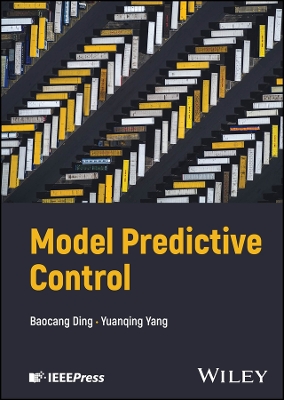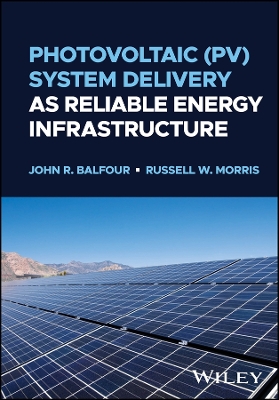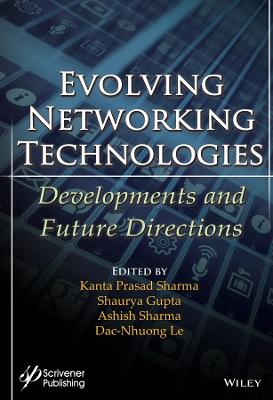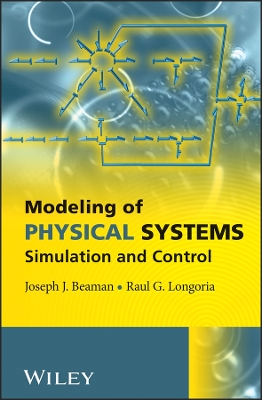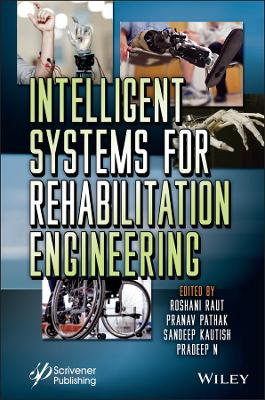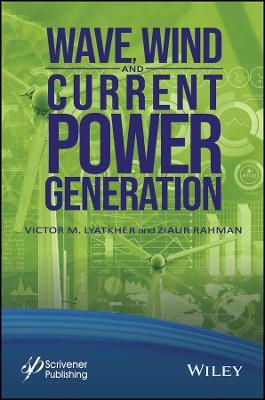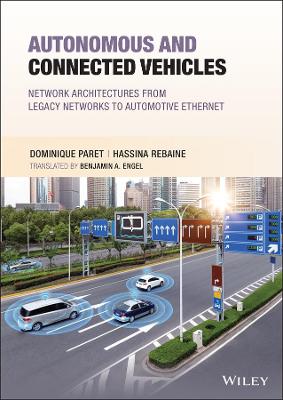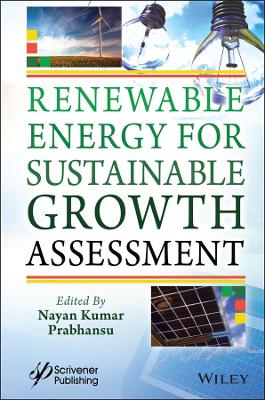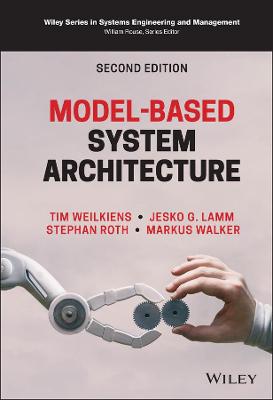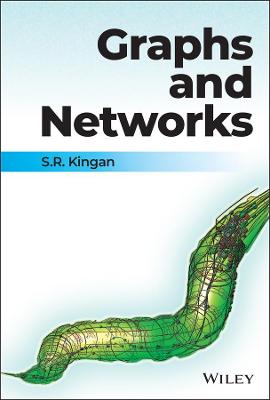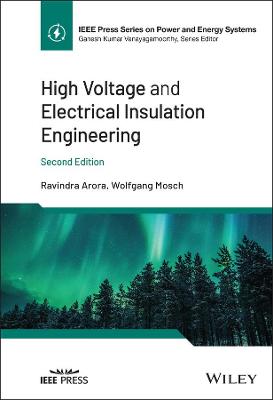Power Electronics in Renewable Energy Systems and Smart Grid
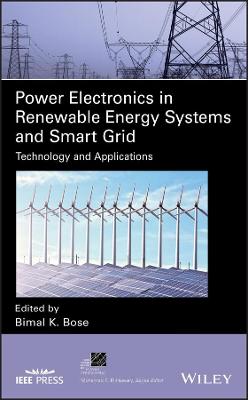 -15%
portes grátis
-15%
portes grátis
Power Electronics in Renewable Energy Systems and Smart Grid
Technology and Applications
Bose, Bimal K.
John Wiley & Sons Inc
09/2019
752
Dura
Inglês
9781119515623
15 a 20 dias
1298
About the editor xix
About the contributors xxi
List of abbreviations xxxiii
Chapter 1 Energy, Environment, Power Electronics, Renewable Energy Systems, and Smart Grid 1
Bimal K. Bose and Fei (Fred) Wang
1.1 Introduction 1
1.2 Energy 1
1.3 Environment 4
1.3.1 Environmental Pollution by Fossil Fuels 4
1.3.2 Climate Change or Global Warming Problems 7
1.3.3 Several Beneficial Effects of Climate Change 11
1.3.4 The Kyoto Protocol and Carbon Emission Control 12
1.3.5 How Can We Solve or Mitigate Climate Change Problems? 13
1.4 Power Electronics 14
1.4.1 The Role of Power Electronics in Renewable Energy Systems and Grids 14
1.4.2 Fundamentals of Power Electronics 16
1.4.3 Power Electronics Applications 35
1.5 Renewable Energy Systems 48
1.5.1 Wind Energy Systems 50
1.5.2 PV Systems 52
1.5.3 Grid Energy Storage 53
1.6 Smart Grid 54
1.6.1 FACTS Technologies 54
1.6.2 HVDC Technologies 60
1.6.3 DC Grid and Supergrid 66
1.6.4 Power Electronics for Distribution Grids 73
1.7 Summary and Future Trends 76
Acknowledgments 78
References 78
Chapter 2 Power Semiconductor Devices for Smart Grid and Renewable Energy Systems 85
Alex Q. Huang
2.1 Introduction 85
2.2 Power Semiconductor Device Operation in Power Converters 87
2.2.1 Commercially Available Power Semiconductor Devices 87
2.2.2 Modern Power Semiconductor Device Characteristics 90
2.3 State-of-the-Art Power Semiconductors: A Comparison 101
2.3.1 Voltage Rating 102
2.3.2 Current Rating 103
2.3.3 Switching Frequency 108
2.3.4 Maximum Junction Temperature 114
2.4 Recent Innovations in SI Power Devices 117
2.4.1 Silicon Superjunction (SJ) MOSFET 117
2.4.2 Thin Wafer Field Stop IGBT (FS-IGBT) 119
2.4.3 Reverse Conducting IGBT (RC-IGBT) 123
2.4.4 Reverse Blocking IGBT 124
2.4.5 Integrated-Gate-Commutated Thyristor (IGCT) 124
2.5 Recent Innovations in WBG Power Devices 127
2.5.1 SiC and GaN Diodes 128
2.5.2 SiC MOSFET 131
2.5.3 Ultra High-Voltage SiC Power Devices 135
2.5.4 GaN Heterojunction Field Effect Transistor 137
2.6 Smart Grid and Renewable Energy System Applications 138
2.7 Conclusions 144
References 144
Chapter 3 Multilevel Converters - Configuration of Circuits and Systems 153
Hirofumi Akagi
3.1 Introduction 153
3.1.1 Historical Review of Multilevel Converters 153
3.1.2 Overview of Chapter 3 155
3.2 Multilevel NPC and NPP Inverters 155
3.2.1 Circuits of Three-Level NPC and NPP Inverters 155
3.2.2 Principles of the Three-Level NPC and NPP Inverters 156
3.2.3 Comparisons Between the Three-Level NPC and NPP Inverters 158
3.2.4 Five-Level NPC Inverters 160
3.3 Multilevel FLC Inverters and Hybrid FLC Inverters 161
3.3.1 Circuits of the Three-Level and Four-Level FLC Inverters 161
3.3.2 Principles of the Three-Level FLC Inverter 162
3.3.3 Hybrid Four-Level and Five-Level FLC Inverters 162
3.4 Modular Multilevel Cascade Converters 164
3.4.1 Terminological Issue and Solution 164
3.4.2 Circuits and Individualities of Six Family Members 167
3.4.3 Topological Discussion on the DSBC and DSCC Converters 168
3.4.4 Comparisons among the Six MMCC Family Members 169
3.4.5 Circulating Current 170
3.5 Practical Applications of SSBC Inverters to Medium-Voltage Motor Drives 171
3.6 Hierarchical Control of an SSBC-Based STATCOM 173
3.6.1 Background and Motivation 173
3.6.2 Hierarchical Control 174
3.7 A Downscaled SSBC-Based STATCOM With Phase-Shifted-Carrier PWM 176
3.7.1 System Configuration 177
3.7.2 Control Technique 179
3.7.3 Experimental Waveforms 181
3.8 Circulating Currents in DSCC Converters 183
3.8.1 Circulating Current in a Cycloconverter 184
3.8.2 Circulating Current in a Single-Leg DSCC Inverter 185
3.8.3 Similarity and Difference in Circulating Current 186
3.9 A Downscaled DSCC-Based BTB System 187
3.9.1 Circuit Configuration 187
3.9.2 Operating Performance under Transient States 189
3.10 Practical Applications of DSCC Converters to Grid Connections 192
3.11 Applications of DSCC and TSBC Converters to Motor Drives 193
3.11.1 DSCC-based Motor Drive Systems 193
3.11.2 Experimental Motor Drives Using a DSCC Inverter and a TSBC Converter 195
3.11.3 Comparisons in Start-up Performance when the 50 Hz Induction Motor was Driven 198
3.11.4 Operation of the DSCC-Driven 50 Hz Motor and the TSBC-Driven 38 Hz Motor at the Rated Frequency and Torque 202
3.11.5 Four-Quadrant Operation of the TSBC-driven 38 Hz Motor at No Load Torque 204
3.11.6 Discussion of the Two Motor Drives 204
3.12 Distributed Dynamic Braking of a DSCC-FED Induction Motor Drive 204
3.12.1 Background and Motivation 206
3.12.2 Circuit and System Configurations 206
3.12.3 Experimental Verification 210
3.13 Practical Applications of DSCC Inverters to Medium-Voltage Motor Drives 212
3.14 Future Scenarios and Conclusion 213
References 214
Chapter 4 Multilevel Converters - Control and Operation in Industrial Systems 219
Jose I. Leon, Sergio Vazquez and Leopoldo G. Franquelo
4.1 Introduction 219
4.2 Summary of Multilevel Converter Topologies 221
4.3 Control Structure of Multilevel Power Converters 223
4.3.1 The Outer Control Loop (Stage 1) 225
4.3.2 The Inner Control Loop (Stage 2) 225
4.3.3 The Zero-Sequence Injection (Stage 3) 226
4.3.4 The In-phase Balancing Strategy (Stage 3) 227
4.4 Modulation Methods for Multilevel Power Converters (Stage 4) 227
4.4.1 Carrier-Based Modulation Techniques 228
4.4.2 Space-vector Based Modulation Methods 242
4.4.3 Pseudo-Modulation Techniques and Control Methods with Implicit Modulator 243
4.5 Applications of Multilevel Power Converters 245
4.5.1 Grid-connected Multilevel Converters for the Integration of Renewable Energy Sources 245
4.5.2 Power Quality Applications 248
4.5.3 Motor Drive Applications 250
4.5.4 HVDC Transmission Systems 251
4.6 Additional Practical Challenges of Multilevel Converters 257
4.7 Future Perspective of Multilevel Converters and Conclusions 258
References 259
Chapter 5 Flexible Transmission and Resilient Distribution Systems Enabled by Power Electronics 271
Fang Z. Peng and Jin Wang
5.1 Introduction 271
5.2 FACTS Configurations in the Smart Grid 279
5.2.1 Shunt Compensation 281
5.2.2 Series Compensation 284
5.2.3 Shunt-Series Configuration 285
5.2.4 Back-to-Back Configuration 286
5.3 RACDS Configurations in the Smart Grid 287
5.3.1 RACDS: Microgrids 287
5.3.2 RACDS: Controllable Distribution Network 289
5.3.3 RACDS: Meshed Distribution Systems 290
5.4 Evolution of FACTS and RACDS 291
5.4.1 Traditional FACTS and RACDS 291
5.4.2 Modern FACTS and RACDS 293
5.5 FACTS and RACDS Installations 298
5.5.1 Traditional FACTS Installations 298
5.5.2 Modern FACTS Installations 299
5.5.3 RACDS Installations 301
5.6 Future Perspectives 301
5.6.1 Transformerless Unified Power Flow Controller 301
5.6.2 Compact Dynamic Phase-Angle Regulator 303
5.6.3 Distributed FACTS 303
5.6.4 Power Regulator for Parallel Feeders 305
5.6.5 High Power Density CMIs 307
5.7 Conclusion 309
Acknowledgments 310
References 310
Chapter 6 Renewable Energy Systems with Wind Power 315
Frede Blaabjerg and Ke Ma
6.1 Overview of Wind Power Generation and Power Electronics 315
6.2 Technology Challenges and Driving Forces in this Field 318
6.2.1 Low Levelized Cost of Energy (LCOE) 318
6.2.2 Complex Mission Profiles 320
6.2.3 Strict Grid Codes 322
6.2.4 Increasing Reliability Requirements 325
6.3 Wind Turbine Concepts and Power Electronics Converters 326
6.3.1 Wind Turbine Concepts 326
6.3.2 Power Electronics Converters in Wind Power Applications 328
6.4 Control of Wind Turbine Systems 333
6.5 Power Electronics for Multiple Wind Turbines and Wind Farms 336
6.6 Conclusion 340
References 341
Chapter 7 Photovoltaic Energy Systems 347
Mariusz Malinowski, Jose I. Leon and Haitham Abu-Rub
7.1 Introduction 347
7.2 Thermal and PV Solar Energy Systems 351
7.3 The Solar Cell 354
7.4 Solar PV System Costs 357
7.4.1 Incentives for More Investments in PV Systems 361
7.5 General Scheme for a Solar PV System 362
7.6 Grid-Connected PV Systems 363
7.6.1 Utility-scale PV Power Plants 364
7.6.2 Residential and Industrial PV Applications 366
7.6.3 Low-power PV Systems 371
7.7 Control of Grid-Connected PV Systems 372
7.8 Stand-Alone PV Systems 374
7.9 Energy Storage Systems for PV Applications 379
7.10 Operational Issues for PV Systems 381
7.11 Conclusions 385
References 386
Chapter 8 Ocean and Geothermal Renewable Energy Systems 391
Annette von Jouanne and Ted K.A. Brekken
8.1 Introduction 391
8.2 Wave Energy 392
8.2.1 Resource Characteristics 392
8.2.2 Wave Energy Conversion Technologies and Resource Characterization 394
8.2.3 Power Electronics and Control 397
8.2.4 Autonomous Applications 401
8.2.5 Cost 403
8.2.6 Rotating Machines in Marine Energy Converters 405
8.2.7 Unique Testing Opportunity for Wave Energy Converters 406
8.3 Ocean Thermal Energy Conversion 411
8.3.1 Resource Characteristics 412
8.3.2 OTEC Technologies 413
8.3.3 Open-cycle OTEC 414
8.3.4 Closed-cycle OTEC 415
8.3.5 OTEC Generator Grid Interface 415
8.3.6 Cost 416
8.4 Tidal and Ocean Currents 417
8.4.1 Resource Characteristics 418
8.4.2 Tidal Barrage, Tidal Current, and Ocean Current Technologies 420
8.4.3 Power Electronics and Grid Interface 422
8.4.4 Cost 425
8.5 Geothermal Energy Systems 426
8.5.1 Resource Characteristics 428
8.5.2 Geothermal Power Plant Technologies 429
8.5.3 Dry Steam 431
8.5.4 Flash Steam 431
8.5.5 Binary Cycle 432
8.5.6 Geothermal Generator Grid Interface 432
8.5.7 Cost 433
8.6 Conclusion 434
Acknowledgment 435
References 435
Chapter 9 Fuel Cells and Their Applications in Energy Systems 443
Jih-Sheng (Jason) Lai and Michael W. Ellis
9.1 Introduction 443
9.2 Different Fuel Cell Technologies 446
9.2.1 Low-temperature Fuel Cells 447
9.2.2 High-temperature Fuel Cells 453
9.3 Fuel Cell Applications 457
9.3.1 Transportation Applications 457
9.3.2 Stationary Power Generation Applications 460
9.4 Electrical Characteristics 462
9.4.1 Steady-state Operation 462
9.4.2 Dynamic Operation 465
9.4.3 Dynamic Operation with a Paralleled Ultracapacitor 468
9.5 Fuel Cell Power System Architecture 468
9.5.1 Balance-of-Plant 468
9.5.2 Fuel Cell DC Power Systems 469
9.5.3 Grounding Requirement for Fuel Cell AC Power Systems 471
9.6 Power Electronics for Fuel Cell Applications 472
9.6.1 DC-DC Converters 472
9.6.2 DC-AC Inverter 479
9.6.3 Double-Line Frequency Issues 484
9.7 Summary 485
References 486
Chapter 10 Grid Energy Storage Systems 495
Marcelo G. Molina
10.1 Introduction 495
10.2 Smart Grid Applications of Energy Storage 500
10.3 Energy Storage Technologies 506
10.3.1 Mechanical Energy Storage 507
10.3.2 Electrical Energy Storage 518
10.3.3 Electrochemical Energy Storage 529
10.3.4 Chemical Energy Storage 547
10.3.5 Thermal Energy Storage 552
10.4 Assessment of Energy Storage Technologies 555
10.5 Power Conditioning System for Interfacing Energy Storage Technologies with the Smart Grid 565
10.6 Conclusion 572
References 574
Chapter 11 Smart Grid Simulations and Control 585
Aranya Chakrabortty and Anjan Bose
11.1 Introduction 585
11.2 Simulation Models 586
11.2.1 Synchronous Generators 588
11.2.2 Models of Renewable Energy Sources 589
11.2.3 Transmission Line Models 591
11.2.4 Load Models 591
11.3 Current Approach for Smart Grid Simulation 592
11.3.1 Power Flow Analysis 592
11.3.2 Dynamic Simulations 593
11.3.3 Economic Dispatch and OPF 593
11.3.4 Fault Analysis 594
11.3.5 Load Frequency Control 594
11.3.6 Operator Training Simulator 594
11.3.7 Reliability Modeling and Simulation 594
11.3.8 Simulation of Power Markets 595
11.4 Challenges for Grid Simulation 595
11.4.1 Structural Properties 596
11.4.2 Scalability 596
11.4.3 Model Validation 596
11.4.4 Model Aggregation 597
11.4.5 Role of Power Electronics 597
11.4.6 Co-simulation of T&D Models 598
11.4.7 Co-Simulation of Infrastructures 599
11.4.8 Cyber-Physical Modeling and Simulations 601
11.5 Next-Generation Grid Control Systems 605
11.5.1 Wide-area Control 605
11.5.2 Cyber-Physical Challenges for Wide-area Control 608
11.5.3 Scheduling Protocols 612
11.5.4 Co-designing Wide-area Control in Tandem with Communication Protocols 613
11.5.5 Plug-and-play Control of DERs 615
11.5.6 Distributed Load Frequency Control 616
11.5.7 Inner-loop + Outer-loop Hierarchical Control 617
11.6 Experimental Testbeds for Simulations and Control 618
11.7 Conclusions 619
References 620
Chapter 12 Artificial Intelligence Applications in Renewable Energy Systems and Smart Grid - Some Novel Applications 625
Bimal K. Bose
12.1 Introduction 625
12.2 Expert Systems 627
12.2.1 Expert System Principles 627
12.2.2 Expert System-Based Control of Smart Grid 631
12.3 Fuzzy Logic 636
12.3.1 Fuzzy Inference System Principles 637
12.3.2 Fuzzy Logic Control of a Modern Wind Generation System 644
12.4 Neural Networks 650
12.4.1 Neural Network Principles 650
12.4.2 Neural Network Applications 662
12.5 Conclusion 672
Acknowledgment 673
References 673
Index 677
About the editor xix
About the contributors xxi
List of abbreviations xxxiii
Chapter 1 Energy, Environment, Power Electronics, Renewable Energy Systems, and Smart Grid 1
Bimal K. Bose and Fei (Fred) Wang
1.1 Introduction 1
1.2 Energy 1
1.3 Environment 4
1.3.1 Environmental Pollution by Fossil Fuels 4
1.3.2 Climate Change or Global Warming Problems 7
1.3.3 Several Beneficial Effects of Climate Change 11
1.3.4 The Kyoto Protocol and Carbon Emission Control 12
1.3.5 How Can We Solve or Mitigate Climate Change Problems? 13
1.4 Power Electronics 14
1.4.1 The Role of Power Electronics in Renewable Energy Systems and Grids 14
1.4.2 Fundamentals of Power Electronics 16
1.4.3 Power Electronics Applications 35
1.5 Renewable Energy Systems 48
1.5.1 Wind Energy Systems 50
1.5.2 PV Systems 52
1.5.3 Grid Energy Storage 53
1.6 Smart Grid 54
1.6.1 FACTS Technologies 54
1.6.2 HVDC Technologies 60
1.6.3 DC Grid and Supergrid 66
1.6.4 Power Electronics for Distribution Grids 73
1.7 Summary and Future Trends 76
Acknowledgments 78
References 78
Chapter 2 Power Semiconductor Devices for Smart Grid and Renewable Energy Systems 85
Alex Q. Huang
2.1 Introduction 85
2.2 Power Semiconductor Device Operation in Power Converters 87
2.2.1 Commercially Available Power Semiconductor Devices 87
2.2.2 Modern Power Semiconductor Device Characteristics 90
2.3 State-of-the-Art Power Semiconductors: A Comparison 101
2.3.1 Voltage Rating 102
2.3.2 Current Rating 103
2.3.3 Switching Frequency 108
2.3.4 Maximum Junction Temperature 114
2.4 Recent Innovations in SI Power Devices 117
2.4.1 Silicon Superjunction (SJ) MOSFET 117
2.4.2 Thin Wafer Field Stop IGBT (FS-IGBT) 119
2.4.3 Reverse Conducting IGBT (RC-IGBT) 123
2.4.4 Reverse Blocking IGBT 124
2.4.5 Integrated-Gate-Commutated Thyristor (IGCT) 124
2.5 Recent Innovations in WBG Power Devices 127
2.5.1 SiC and GaN Diodes 128
2.5.2 SiC MOSFET 131
2.5.3 Ultra High-Voltage SiC Power Devices 135
2.5.4 GaN Heterojunction Field Effect Transistor 137
2.6 Smart Grid and Renewable Energy System Applications 138
2.7 Conclusions 144
References 144
Chapter 3 Multilevel Converters - Configuration of Circuits and Systems 153
Hirofumi Akagi
3.1 Introduction 153
3.1.1 Historical Review of Multilevel Converters 153
3.1.2 Overview of Chapter 3 155
3.2 Multilevel NPC and NPP Inverters 155
3.2.1 Circuits of Three-Level NPC and NPP Inverters 155
3.2.2 Principles of the Three-Level NPC and NPP Inverters 156
3.2.3 Comparisons Between the Three-Level NPC and NPP Inverters 158
3.2.4 Five-Level NPC Inverters 160
3.3 Multilevel FLC Inverters and Hybrid FLC Inverters 161
3.3.1 Circuits of the Three-Level and Four-Level FLC Inverters 161
3.3.2 Principles of the Three-Level FLC Inverter 162
3.3.3 Hybrid Four-Level and Five-Level FLC Inverters 162
3.4 Modular Multilevel Cascade Converters 164
3.4.1 Terminological Issue and Solution 164
3.4.2 Circuits and Individualities of Six Family Members 167
3.4.3 Topological Discussion on the DSBC and DSCC Converters 168
3.4.4 Comparisons among the Six MMCC Family Members 169
3.4.5 Circulating Current 170
3.5 Practical Applications of SSBC Inverters to Medium-Voltage Motor Drives 171
3.6 Hierarchical Control of an SSBC-Based STATCOM 173
3.6.1 Background and Motivation 173
3.6.2 Hierarchical Control 174
3.7 A Downscaled SSBC-Based STATCOM With Phase-Shifted-Carrier PWM 176
3.7.1 System Configuration 177
3.7.2 Control Technique 179
3.7.3 Experimental Waveforms 181
3.8 Circulating Currents in DSCC Converters 183
3.8.1 Circulating Current in a Cycloconverter 184
3.8.2 Circulating Current in a Single-Leg DSCC Inverter 185
3.8.3 Similarity and Difference in Circulating Current 186
3.9 A Downscaled DSCC-Based BTB System 187
3.9.1 Circuit Configuration 187
3.9.2 Operating Performance under Transient States 189
3.10 Practical Applications of DSCC Converters to Grid Connections 192
3.11 Applications of DSCC and TSBC Converters to Motor Drives 193
3.11.1 DSCC-based Motor Drive Systems 193
3.11.2 Experimental Motor Drives Using a DSCC Inverter and a TSBC Converter 195
3.11.3 Comparisons in Start-up Performance when the 50 Hz Induction Motor was Driven 198
3.11.4 Operation of the DSCC-Driven 50 Hz Motor and the TSBC-Driven 38 Hz Motor at the Rated Frequency and Torque 202
3.11.5 Four-Quadrant Operation of the TSBC-driven 38 Hz Motor at No Load Torque 204
3.11.6 Discussion of the Two Motor Drives 204
3.12 Distributed Dynamic Braking of a DSCC-FED Induction Motor Drive 204
3.12.1 Background and Motivation 206
3.12.2 Circuit and System Configurations 206
3.12.3 Experimental Verification 210
3.13 Practical Applications of DSCC Inverters to Medium-Voltage Motor Drives 212
3.14 Future Scenarios and Conclusion 213
References 214
Chapter 4 Multilevel Converters - Control and Operation in Industrial Systems 219
Jose I. Leon, Sergio Vazquez and Leopoldo G. Franquelo
4.1 Introduction 219
4.2 Summary of Multilevel Converter Topologies 221
4.3 Control Structure of Multilevel Power Converters 223
4.3.1 The Outer Control Loop (Stage 1) 225
4.3.2 The Inner Control Loop (Stage 2) 225
4.3.3 The Zero-Sequence Injection (Stage 3) 226
4.3.4 The In-phase Balancing Strategy (Stage 3) 227
4.4 Modulation Methods for Multilevel Power Converters (Stage 4) 227
4.4.1 Carrier-Based Modulation Techniques 228
4.4.2 Space-vector Based Modulation Methods 242
4.4.3 Pseudo-Modulation Techniques and Control Methods with Implicit Modulator 243
4.5 Applications of Multilevel Power Converters 245
4.5.1 Grid-connected Multilevel Converters for the Integration of Renewable Energy Sources 245
4.5.2 Power Quality Applications 248
4.5.3 Motor Drive Applications 250
4.5.4 HVDC Transmission Systems 251
4.6 Additional Practical Challenges of Multilevel Converters 257
4.7 Future Perspective of Multilevel Converters and Conclusions 258
References 259
Chapter 5 Flexible Transmission and Resilient Distribution Systems Enabled by Power Electronics 271
Fang Z. Peng and Jin Wang
5.1 Introduction 271
5.2 FACTS Configurations in the Smart Grid 279
5.2.1 Shunt Compensation 281
5.2.2 Series Compensation 284
5.2.3 Shunt-Series Configuration 285
5.2.4 Back-to-Back Configuration 286
5.3 RACDS Configurations in the Smart Grid 287
5.3.1 RACDS: Microgrids 287
5.3.2 RACDS: Controllable Distribution Network 289
5.3.3 RACDS: Meshed Distribution Systems 290
5.4 Evolution of FACTS and RACDS 291
5.4.1 Traditional FACTS and RACDS 291
5.4.2 Modern FACTS and RACDS 293
5.5 FACTS and RACDS Installations 298
5.5.1 Traditional FACTS Installations 298
5.5.2 Modern FACTS Installations 299
5.5.3 RACDS Installations 301
5.6 Future Perspectives 301
5.6.1 Transformerless Unified Power Flow Controller 301
5.6.2 Compact Dynamic Phase-Angle Regulator 303
5.6.3 Distributed FACTS 303
5.6.4 Power Regulator for Parallel Feeders 305
5.6.5 High Power Density CMIs 307
5.7 Conclusion 309
Acknowledgments 310
References 310
Chapter 6 Renewable Energy Systems with Wind Power 315
Frede Blaabjerg and Ke Ma
6.1 Overview of Wind Power Generation and Power Electronics 315
6.2 Technology Challenges and Driving Forces in this Field 318
6.2.1 Low Levelized Cost of Energy (LCOE) 318
6.2.2 Complex Mission Profiles 320
6.2.3 Strict Grid Codes 322
6.2.4 Increasing Reliability Requirements 325
6.3 Wind Turbine Concepts and Power Electronics Converters 326
6.3.1 Wind Turbine Concepts 326
6.3.2 Power Electronics Converters in Wind Power Applications 328
6.4 Control of Wind Turbine Systems 333
6.5 Power Electronics for Multiple Wind Turbines and Wind Farms 336
6.6 Conclusion 340
References 341
Chapter 7 Photovoltaic Energy Systems 347
Mariusz Malinowski, Jose I. Leon and Haitham Abu-Rub
7.1 Introduction 347
7.2 Thermal and PV Solar Energy Systems 351
7.3 The Solar Cell 354
7.4 Solar PV System Costs 357
7.4.1 Incentives for More Investments in PV Systems 361
7.5 General Scheme for a Solar PV System 362
7.6 Grid-Connected PV Systems 363
7.6.1 Utility-scale PV Power Plants 364
7.6.2 Residential and Industrial PV Applications 366
7.6.3 Low-power PV Systems 371
7.7 Control of Grid-Connected PV Systems 372
7.8 Stand-Alone PV Systems 374
7.9 Energy Storage Systems for PV Applications 379
7.10 Operational Issues for PV Systems 381
7.11 Conclusions 385
References 386
Chapter 8 Ocean and Geothermal Renewable Energy Systems 391
Annette von Jouanne and Ted K.A. Brekken
8.1 Introduction 391
8.2 Wave Energy 392
8.2.1 Resource Characteristics 392
8.2.2 Wave Energy Conversion Technologies and Resource Characterization 394
8.2.3 Power Electronics and Control 397
8.2.4 Autonomous Applications 401
8.2.5 Cost 403
8.2.6 Rotating Machines in Marine Energy Converters 405
8.2.7 Unique Testing Opportunity for Wave Energy Converters 406
8.3 Ocean Thermal Energy Conversion 411
8.3.1 Resource Characteristics 412
8.3.2 OTEC Technologies 413
8.3.3 Open-cycle OTEC 414
8.3.4 Closed-cycle OTEC 415
8.3.5 OTEC Generator Grid Interface 415
8.3.6 Cost 416
8.4 Tidal and Ocean Currents 417
8.4.1 Resource Characteristics 418
8.4.2 Tidal Barrage, Tidal Current, and Ocean Current Technologies 420
8.4.3 Power Electronics and Grid Interface 422
8.4.4 Cost 425
8.5 Geothermal Energy Systems 426
8.5.1 Resource Characteristics 428
8.5.2 Geothermal Power Plant Technologies 429
8.5.3 Dry Steam 431
8.5.4 Flash Steam 431
8.5.5 Binary Cycle 432
8.5.6 Geothermal Generator Grid Interface 432
8.5.7 Cost 433
8.6 Conclusion 434
Acknowledgment 435
References 435
Chapter 9 Fuel Cells and Their Applications in Energy Systems 443
Jih-Sheng (Jason) Lai and Michael W. Ellis
9.1 Introduction 443
9.2 Different Fuel Cell Technologies 446
9.2.1 Low-temperature Fuel Cells 447
9.2.2 High-temperature Fuel Cells 453
9.3 Fuel Cell Applications 457
9.3.1 Transportation Applications 457
9.3.2 Stationary Power Generation Applications 460
9.4 Electrical Characteristics 462
9.4.1 Steady-state Operation 462
9.4.2 Dynamic Operation 465
9.4.3 Dynamic Operation with a Paralleled Ultracapacitor 468
9.5 Fuel Cell Power System Architecture 468
9.5.1 Balance-of-Plant 468
9.5.2 Fuel Cell DC Power Systems 469
9.5.3 Grounding Requirement for Fuel Cell AC Power Systems 471
9.6 Power Electronics for Fuel Cell Applications 472
9.6.1 DC-DC Converters 472
9.6.2 DC-AC Inverter 479
9.6.3 Double-Line Frequency Issues 484
9.7 Summary 485
References 486
Chapter 10 Grid Energy Storage Systems 495
Marcelo G. Molina
10.1 Introduction 495
10.2 Smart Grid Applications of Energy Storage 500
10.3 Energy Storage Technologies 506
10.3.1 Mechanical Energy Storage 507
10.3.2 Electrical Energy Storage 518
10.3.3 Electrochemical Energy Storage 529
10.3.4 Chemical Energy Storage 547
10.3.5 Thermal Energy Storage 552
10.4 Assessment of Energy Storage Technologies 555
10.5 Power Conditioning System for Interfacing Energy Storage Technologies with the Smart Grid 565
10.6 Conclusion 572
References 574
Chapter 11 Smart Grid Simulations and Control 585
Aranya Chakrabortty and Anjan Bose
11.1 Introduction 585
11.2 Simulation Models 586
11.2.1 Synchronous Generators 588
11.2.2 Models of Renewable Energy Sources 589
11.2.3 Transmission Line Models 591
11.2.4 Load Models 591
11.3 Current Approach for Smart Grid Simulation 592
11.3.1 Power Flow Analysis 592
11.3.2 Dynamic Simulations 593
11.3.3 Economic Dispatch and OPF 593
11.3.4 Fault Analysis 594
11.3.5 Load Frequency Control 594
11.3.6 Operator Training Simulator 594
11.3.7 Reliability Modeling and Simulation 594
11.3.8 Simulation of Power Markets 595
11.4 Challenges for Grid Simulation 595
11.4.1 Structural Properties 596
11.4.2 Scalability 596
11.4.3 Model Validation 596
11.4.4 Model Aggregation 597
11.4.5 Role of Power Electronics 597
11.4.6 Co-simulation of T&D Models 598
11.4.7 Co-Simulation of Infrastructures 599
11.4.8 Cyber-Physical Modeling and Simulations 601
11.5 Next-Generation Grid Control Systems 605
11.5.1 Wide-area Control 605
11.5.2 Cyber-Physical Challenges for Wide-area Control 608
11.5.3 Scheduling Protocols 612
11.5.4 Co-designing Wide-area Control in Tandem with Communication Protocols 613
11.5.5 Plug-and-play Control of DERs 615
11.5.6 Distributed Load Frequency Control 616
11.5.7 Inner-loop + Outer-loop Hierarchical Control 617
11.6 Experimental Testbeds for Simulations and Control 618
11.7 Conclusions 619
References 620
Chapter 12 Artificial Intelligence Applications in Renewable Energy Systems and Smart Grid - Some Novel Applications 625
Bimal K. Bose
12.1 Introduction 625
12.2 Expert Systems 627
12.2.1 Expert System Principles 627
12.2.2 Expert System-Based Control of Smart Grid 631
12.3 Fuzzy Logic 636
12.3.1 Fuzzy Inference System Principles 637
12.3.2 Fuzzy Logic Control of a Modern Wind Generation System 644
12.4 Neural Networks 650
12.4.1 Neural Network Principles 650
12.4.2 Neural Network Applications 662
12.5 Conclusion 672
Acknowledgment 673
References 673
Index 677

